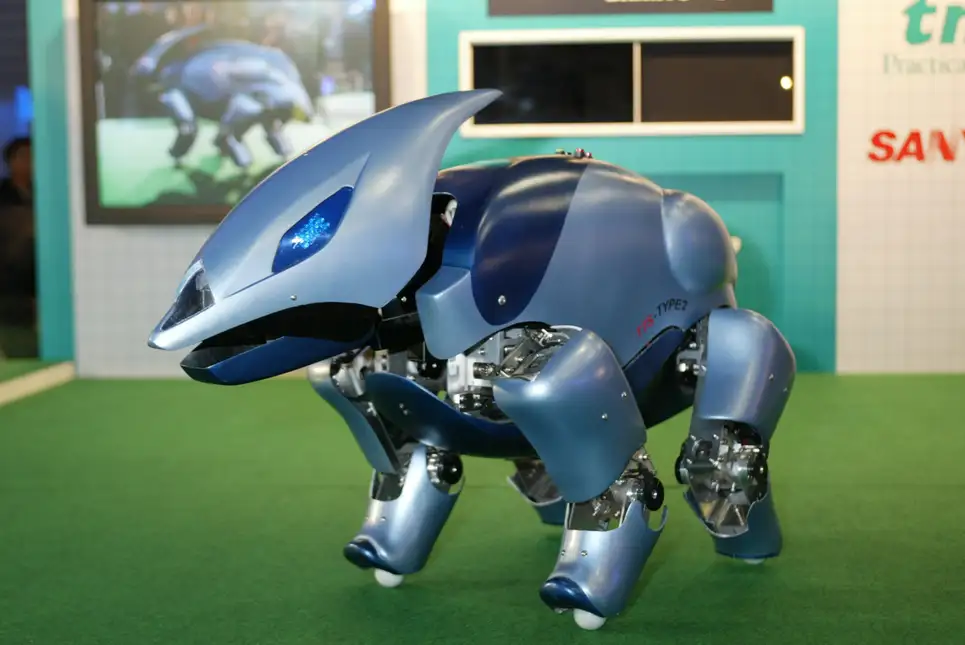In the future, you’ll be able to inhabit a virtual world, meeting up with friends to chat and lounge around with an avatar you’ve created yourself. This virtual “you” will be customizable and there will be no limits to this amazing world. It all sounds a bit like the future companies like Meta have in mind here in 2022.
If you happened to visit the Consumer Electronics Show in Las Vegas in January of 2002, you may have spotted a “consumer wearable” device made by a company called Xybernaut that included a pocket computer, tethered hand switch, and a head-mounted display. Dubbed the Poma, the device retailed for $1,499, but never found its way into mainstream success.
Users could access “pocket” versions of Internet Explorer, Windows Media Player, and even a version of Microsoft Word—though we imagine navigating any of it was incredibly difficult with that tethered remote.
What happened to Xybernaut? The founders, Edward and Steven Newman, were investigated by the SEC in 2005 for a ton of illegal shit, including keeping the company’s board in the dark about large sums of money and trying to interfere with audits. The two were forced to resign shortly after that and were indicted for money laundering and securities fraud in 2007.
There was also a short blurb about something called Second Life. From Time magazine:

“Ever want to build a cathedral? Underwater? Change your clothes, your face, your whole body? Fly? You can’t do any of that stuff in real life, but you can do it all and more in Second Life, a startlingly lifelike 3-D virtual world now evolving on the Internet. Unlike other shared online adventures, Second Life isn’t about slaying monsters or zapping aliens. It’s about building things, meeting people and expressing yourself. Even if you already have a life, you may want a second one.”
The elevator pitch for Second Life sounds nearly identical to the pitch Meta, the company previously known as Facebook, is currently making for its own metaverse. But just how much success will Meta find? That part remains to be seen.
Robotic pets have been a vision of the future for longer than you can probably guess. But most iterations have been pretty disappointing, to say the least.

This robotic “guard dog,” was released by Japan’s Sanyo Electric and was supposed to cost about $750 U.S. at the time, or roughly $1,200 adjusted for inflation. But this dog, just like the robotic pets of the 2020s, aren’t putting flesh-and-blood pooches out of work anytime soon.
But what did the kids of 2002 imagine for the future? The January 22, 2002 issue of the Corpus Christi Caller-Times published the predictions of kids and they’re a fascinating snapshot of the generation.

Some excerpts from the kids:
- “Homes will be similar to ours now except the alarm system will be a robotic microchip.”
- “Museums will have big collections of new dinosaur bones and other bones.”
- “The music rage will mostly be techno.”
- “Due to carelessness, 90 percent of all people will have contracted a sexually transmitted disease in some point in their life.”
- “Minimum wage will go up to $8.35 an hour.”
Reflexive Analysis
There is little to this article beyond the gallery of 2002 technology, but I felt it was interesting nonetheless. Observing how people envisioned the future 20 years ago may be helpful in predicting the future today!
In 2002 most Americans had war in the middle east on their minds, their desire for conflict resulting in 1 – 2.4 million Iraqi deaths. Back then (and now) the future seemed bleak, especially compared to predictions from earlier decades. The 70s hoped for personal robots and the 90s hoped for flying cars, but these romantic ideas of the future almost seem to be dulling, and it is noticeable when asking children from 2002 their predictions of the future. There is a shift from the fantastical to the banal, from wanting hoverboards to discussing living wages, from imagining AI assistants to hoping STD infection rates don’t rise. Even further still, it appears kids today are predicting less and less bright futures, and the negative cultural zeitgeist is beginning to rub off on our generation’s youth to create little cynics and nihilists.
This view, however, is reductive. I’m certain that kids from the 70s onwards also had a realistic and unglamorous set of predictions for the future, we just don’t hear about them (or they were never recorded in the first place). The point is; our world is increasingly deciding to care about one another in ways that matter.
Novak, Matt. "2002's Visions From the Future." Gizmodo, Gawker Media, 3 Aug. 2022. Accessed 1 Sept. 2022.




